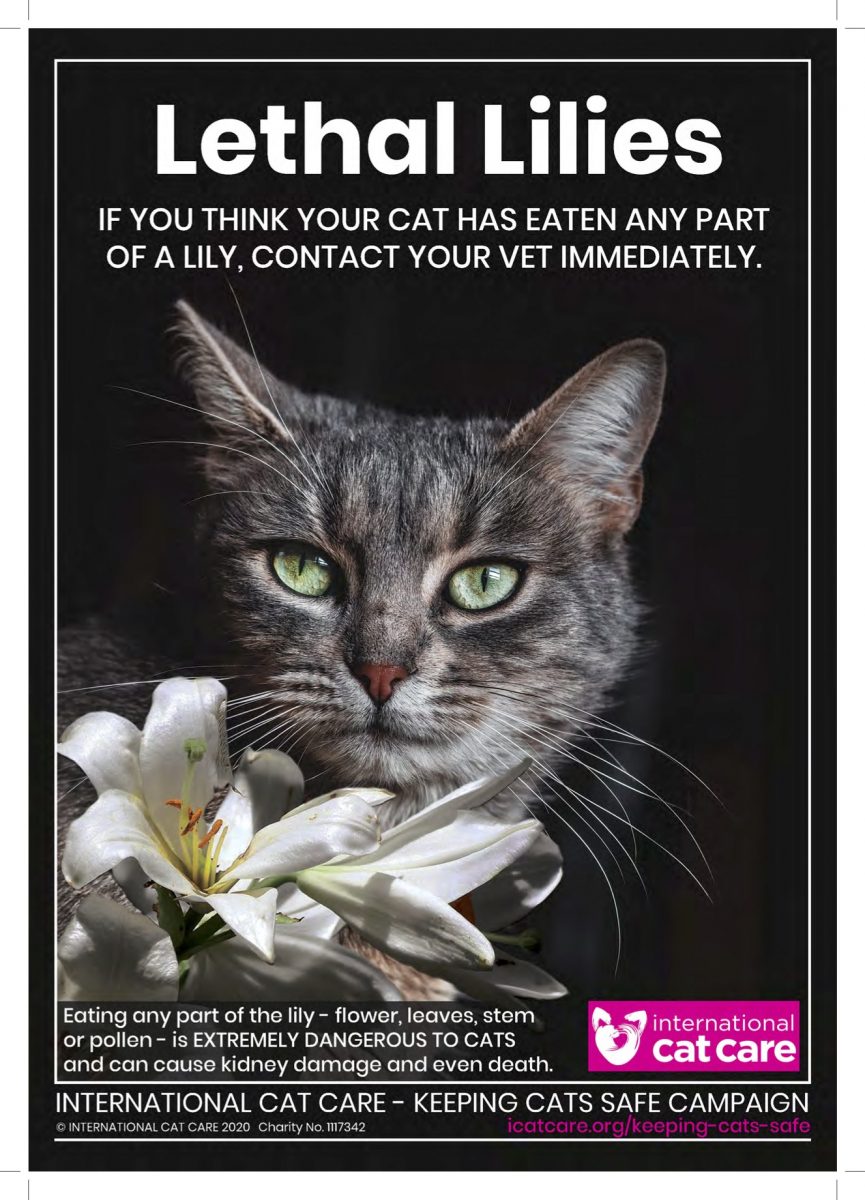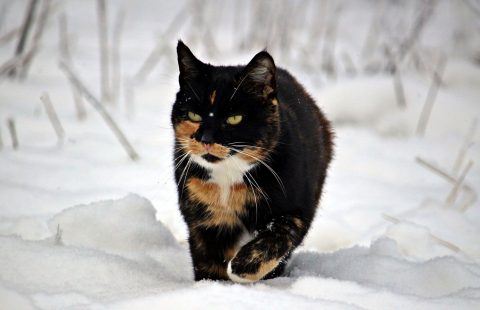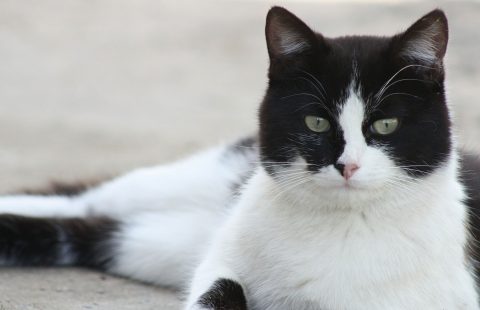Our second Keeping Cats Safe topic is now drawing to a close, and we’re bringing together some of the key messages we’ve shared over the course of the month.
As with most issues facing cat welfare when the charity was founded over 60 years ago, very little was known about the risk of certain plants to the physical health of domestic cats. A list compiled in the early days of the charity included only a handful, and missed out some completely that are considered amongst the most toxic today.

We’ve come a long way since then, and below is our current advice.
Lilies
One of the most toxic plants for cats are lilies, which account for a large proportion of feline poisoning cases.
Many different plants have lily in their name, for example, peace lily and lily of the valley, and whilst these may have different toxic effects, it’s all species of Lilum (true lily) and Hemerocallis (day lily) that are being discussed here.
All parts of the plant are toxic, the pollen, flowers, stem and leaves. Ingesting less than one leaf, part of a flower, pollen, or even drinking water from a vase holding cut lilies can be fatal. The toxin causes severe damage to the kidneys, which can lead to kidney failure and result in death. Put simply, lilies should be kept out of your home and garden if you own a cat.
For free roaming cats it’s more difficult to ensure they won’t come into contact with them, and even if they don’t directly interact, just brushing past them and licking the pollen from their coats can be fatal.
Symptoms of poisoning include:
- Drooling
- Vomiting
- Refusing food
- Lethargy
- Depression
- On examination a vet may find enlarged and painful kidneys
If you suspect that your cat has come into contact with lilies, it’s important to seek veterinary advice immediately. As the toxic effects are so severe and develop so rapidly, ensuring that they receive treatment as quickly as possible is crucial to improving their chance of recovery. For more information see our article here.
To raise awareness of the danger they pose, and to act as a physical reminder in retailers, we’ve created a downloadable poster that’s available here.

As part of the campaign, we have shared stories from cat owners and professionals. Below is a first-hand account from the owner of a 3 ½ year old tabby cat.
The owner received an indoor lily as a gift, and noticed that her cat had chewed the leaves. Shortly after her cat began vomiting, and the owner looked online and quickly discovered how toxic lilies are to cats. The cat was immediately taken to the vet and treated with fluids and activated charcoal. Fortunately, treatment was given very quickly after ingestion, and at the time of writing it looked as though there would be no long-lasting negative health effects. The owner urges others to check that plants are safe before bringing them into the home or garden.
Other plants
Lilies aren’t the only dangerous plant, and for a more comprehensive list of indoor and outdoor plants, see our article here.
Positive Plants
As well as toxic plants, we have also looked at positive plants. It’s not just catnip that cats enjoy, and a range are discussed in the article here. Cats also naturally choose to chew grass, although it isn’t fully understood why. Providing cat grass (common oats) for indoor cats can be a great way to enrich their environment.
Click here to read the first article in the plants and cats series.
The next topic in the campaign is ‘Cats and household chemicals’ and you can keep up to date with this and future topics here.






